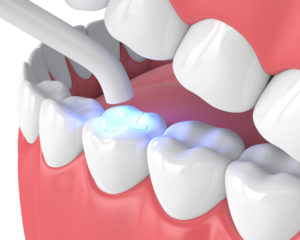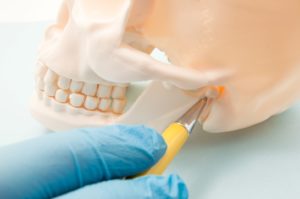
Did your dentist say you needed fillings at your last checkup? During this busy time of year, it can be tempting to avoid scheduling that appointment, especially if you’re not in pain. However, leaving a cavity untreated can have serious long-term consequences. It can also end up costing you! Why not save money and get your fillings out of the way now? Keep reading to learn why now is a great time to use your dental insurance in South Windsor for a filling.
(more…)
 The temporomandibular (TM) joint is located on either side of the face to connect the lower jaw to the skull. Sometimes, the joint can function incorrectly, known as a temporomandibular joint disorder (TMD). Commonly misreferred to as a TMJ disorder, it’s often believed only adults are vulnerable to the condition; however, children can be affected by it as well. It’s estimated 6-68% of children and adolescents suffer from it, which is often triggered by emotional stress. Children with TMD in South Windsor don’t need to live with reoccurring jaw pain. Here’s how you can spot the signs to get them the relief they need.
The temporomandibular (TM) joint is located on either side of the face to connect the lower jaw to the skull. Sometimes, the joint can function incorrectly, known as a temporomandibular joint disorder (TMD). Commonly misreferred to as a TMJ disorder, it’s often believed only adults are vulnerable to the condition; however, children can be affected by it as well. It’s estimated 6-68% of children and adolescents suffer from it, which is often triggered by emotional stress. Children with TMD in South Windsor don’t need to live with reoccurring jaw pain. Here’s how you can spot the signs to get them the relief they need.




 The holidays are meant for your family and friends, not to be spent with your dentist in Manchester. After tirelessly preparing your house to get your family in the holiday spirit, you’re finally ready to start enjoying the season. The last thing on your mind is your dental health. Many people neglect their mouths during this busy time-of-year, which could result in a developing oral problem. For a joyous and stress-free season, read on for five holiday dental health tips.
The holidays are meant for your family and friends, not to be spent with your dentist in Manchester. After tirelessly preparing your house to get your family in the holiday spirit, you’re finally ready to start enjoying the season. The last thing on your mind is your dental health. Many people neglect their mouths during this busy time-of-year, which could result in a developing oral problem. For a joyous and stress-free season, read on for five holiday dental health tips.  Summer is coming to a close, which means that parents are scrambling to get their children ready for the upcoming schoolyear. You’re probably buying pencils, notebooks, new shoes, folders, and so much more to check off your kids’ back to school list. However, there’s an item that you’re probably forgetting: a routine checkup and cleaning with your dentist in Manchester. Taking them in for a dental visit before school starts will not only ensure their positive oral health, but it will set them up for a successful year of education. Keep reading to learn why you should always schedule a dental appointment before the end of summer.
Summer is coming to a close, which means that parents are scrambling to get their children ready for the upcoming schoolyear. You’re probably buying pencils, notebooks, new shoes, folders, and so much more to check off your kids’ back to school list. However, there’s an item that you’re probably forgetting: a routine checkup and cleaning with your dentist in Manchester. Taking them in for a dental visit before school starts will not only ensure their positive oral health, but it will set them up for a successful year of education. Keep reading to learn why you should always schedule a dental appointment before the end of summer. Is your calendar filling up with graduations, weddings, family vacations and trips with friends? If so, your summer is looking like it will be filled with fun — and you’ll want to look good for all of the pictures that will document these happy memories. Don’t let a stained or chipped tooth take away from your summer plans with feelings of low self-esteem and embarrassment. There is a variety of
Is your calendar filling up with graduations, weddings, family vacations and trips with friends? If so, your summer is looking like it will be filled with fun — and you’ll want to look good for all of the pictures that will document these happy memories. Don’t let a stained or chipped tooth take away from your summer plans with feelings of low self-esteem and embarrassment. There is a variety of